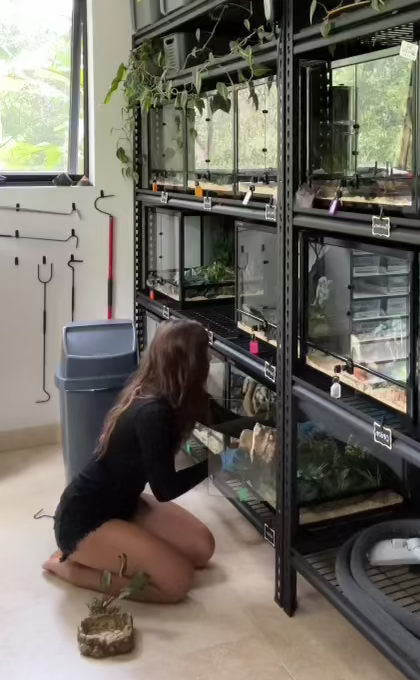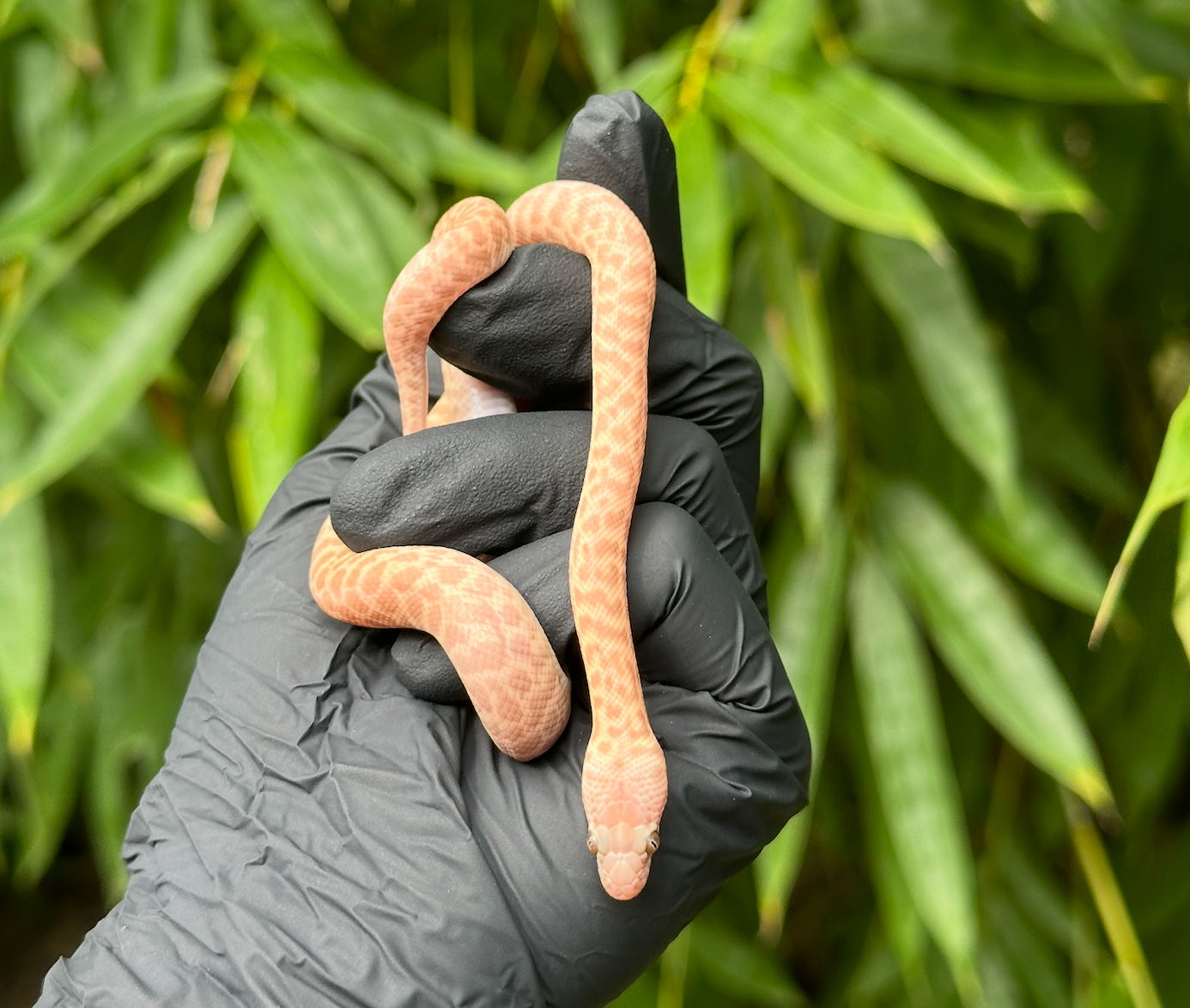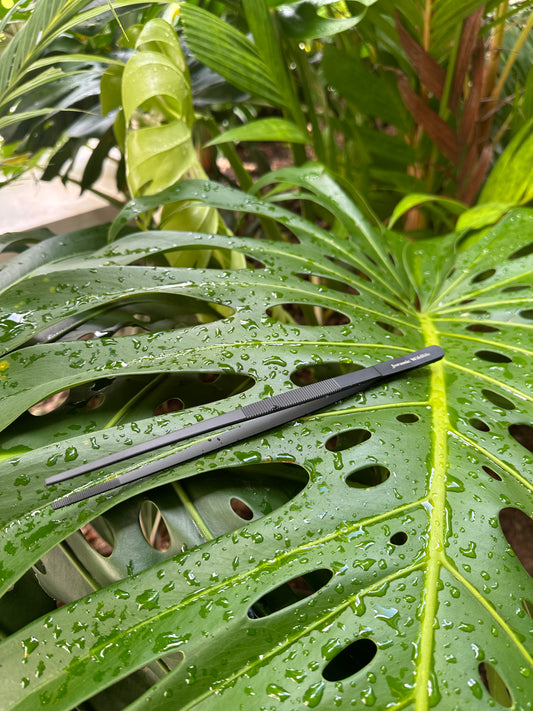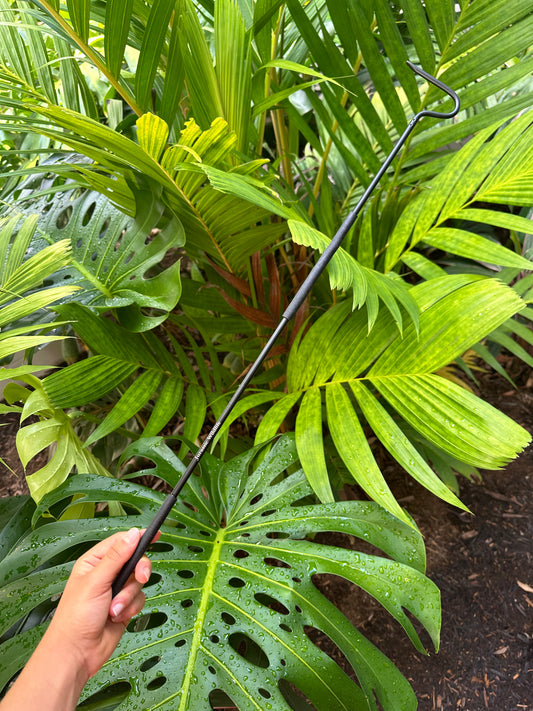Hygiene Protocol for Reptile Keepers & Breeders

Whether you only have two reptiles, or a collection of two hundred, maintaining proper hygiene practices is essential for any reptile keeper or breeder that wants to ensure optimal health and prevent illness for their animals.
Reptiles can be vulnerable to a wide range of pathogens including Salmonella spp., Mycobacterium, various parasites such as Ophionyssus natricis (the snake mite), and viruses such as Nidovirus.
These can spread via direct contact or by contaminated tools and hands. In breeding collections or households with multiple animals, the risk for cross-contamination risk increases.
Good hygiene is not optional — it is a fundamental part of ethical reptile keeping and it is our sole responsibly to ensure our reptiles are free from discomfort, distress, and disease.
Why Is Hygiene So Important?
When undertaking maintenance tasks, our primary objective is to protect each individual animals health and reduce the risk of cross-contamination between individuals.
Good hygiene prevents the spread of harmful bacteria, parasites, and viruses — which directly reduces the risk of illness in your collection, minimises the chance of zoonotic disease transmission (illnesses that can spread from animals to humans), promotes animal welfare, and ensures you are caring for your reptiles ethically and responsibly.

Correct Hygiene Protocol
Ideally, each reptile should have a dedicated set of tools and personal items — including feeding tongs, water bowls, hides, and cleaning equipment. This system minimises the risk of transmitting disease between enclosures. Additionally, proper hand hygiene should be performed between handling each individual animal.
However, in large collections and in breeding facilities, having individual items for every animal is not realistic. In these cases, using a new set of latex or nitrile disposable gloves during handling and cleaning for each individual is recommended. Tools and personal items must also be disinfected between working with each individual animal.
Common Disinfectants
F10
A veterinary-grade disinfectant widely used in clinics and in reptile care, it is effective against bacteria, viruses, fungi, and spores. F10 must be diluted and used according to the instructions. A 1:250 ratio of F10 to water is adequate for general disinfecting. For viruses, a stronger dilution and longer contact time is needed. Keep in mind, F10 is marked as harmful to aquatic life with long lasting effects.
Methylated Spirits
This can be used for disinfecting tools, equipment, and surfaces. It is effective against many bacteria and some viruses due to its high alcohol content. Use with caution as methylated spirits can cause irritation and toxicity.
Chlorhexidine
A broad-spectrum disinfectant effective against many bacteria, some fungi, and some viruses. When diluted correctly, it is said to be non-toxic, low-odour, and less irritating to skin and respiratory systems compared to other disinfectants. A 1:32 ratio of chlorhexidine to water is recommended. Note that chlorhexidine is not effective against all pathogens.
Vineger
This natural cleaner can remove mineral deposits, odours, and surface grime, but is generally not strong enough to kill most harmful bacteria, viruses, or fungi that may affect reptiles. Vinegar is best used alongside another disinfectant.
Bleach
This powerful, broad-spectrum disinfectant is effective against bacteria, viruses, and fungal spores. Bleach must be properly diluted, I recommend a 1:32 ratio of bleach to water, but there is varying advice as to what the correct ratio of dilution is. After using bleach, surfaces must be rinsed thoroughly and allowed to air dry completely before animals are reintroduced, as bleach residue can be harmful.
Hydrogen Peroxide
A mild disinfectant that can kill many bacteria, viruses, and fungi by releasing oxygen that breaks down microbial cell walls. It is usually used in a 3% solution and is most effective on clean, non-porous surfaces. Hydrogen peroxide is safer than bleach and doesn’t leave toxic residues, but it is less effective for high-risk cleaning areas.
Eucalyptus Oil / Tea Tree Oil
Eucalyptus oil and tea tree oil are natural oils with antimicrobial properties that can kill some bacteria and fungi. These oils should be used with caution as they contain compounds that can be toxic to reptiles, especially in a concentrated or vaporised form.
Step By Step...
Step 1 - Prepare Your Area
Before you even open an enclosure, make sure everything is ready to go. This saves time and keeps things flowing.
You will need...
- Disposable gloves (ideally nitrile or latex)
- Safe and appropriate disinfectant made up using the right dilution ratio
- Paper towels and clean cloths
- Bin and garbage bag (for soiled items)
- Pre-cleaned/disinfected water bowls, hides, enrichment, and other items
Tip - Always work from the cleanest to the dirtiest enclosure to reduce the risk of spreading pathogens.
Step 2 - Perform Maintenance Tasks for ONE Reptile
Focus on one reptile at a time. Avoid multitasking between animals — even if you are wearing gloves. These tasks will vary depending on if you are conducting a daily spot clean or a less frequent full deep clean.
Check and perform...
- Remove all items from the enclosure (e.g hides, water bowl, enrichment, etc)
- Spot-clean any visible waste/urates or completely replace substrate
- Wipe down the entire enclosure with the appropriate disinfectant (ensure to leave on for the correct contact time)
- Introduce clean items back into the enclosure
Tip - If you are using reusable hides or enrichment, rotate them out and clean/disinfect between uses.
Step 3 - Discard Or Clean Contaminated Items and Disinfect Surfaces
Even if it feels minor, anything that has touched that individual reptile counts as potentially contaminated.
This includes...
- Soiled paper towels/substrate
- Gloves
- Used surfaces (e.g the countertop you placed a contaminated hide on)
- Any items that have been touched with contaminated gloves (e.g a pen, your phone, etc)
- Any items that were in direct contact with the reptile or their waste
Once you’ve identified the contaminated items and surfaces, discard or clean and disinfect them.
Step 4 - Do It All Over Again!
Now that your first reptiles enclosure is clean, it is time to repeat the process for the next one — with new gloves, new/clean tools, and freshly prepped supplies.
By staying consistent with your hygiene protocols and keeping yourself up to date on information, you can ensure optimal animal welfare for every individual in your collection and promote the long-term sustainability of your animals health and well-being.
_
Written By Ava De Jesus
Need some reptile tools?
-
Feeding Tongs
Regular price $16.00 AUDRegular priceUnit price / per -
Snake Hook
Regular price $25.00 AUDRegular priceUnit price / per














